



A geothermal heat pump (also called GeoExchange, earth-
Geothermal heat pumps are known also as "GeoExchange" systems, or "ground source heat pumps", to clearly distinguish them from air source heat pumps. It is important to understand that ground source heat pumps draw energy from shallow ground. The energy originates from the sun: none of the energy originates from the centre of the Earth, in spite of the name "geothermal heat pump". Genuine geothermal energy from the centre of Earth is available only in places where volcanic activity comes close to the surface.
These systems operate based on the stability of underground temperatures: the shallow ground, this is the upper 10 feet (3.0 m) of Earth´s surface, has a very stable temperature throughout the year -
The system cost are returned in energy savings in 5–10 years. System life is estimated at 25 years for the inside components and 50+ years for the ground loop. There are approximately 50,000 geothermal heat pumps installed in the United States each year. A geothermal heat pump is a heat pump that uses the Earth as either a heat source, when operating in heating mode, or a heat sink, when operating in cooling mode. The source or sink is used to change the state of the refrigeration gas in the refrigeration circuit, which results in the ability of the appliance to remove heat or provide deliverable heat. This is known as a water-
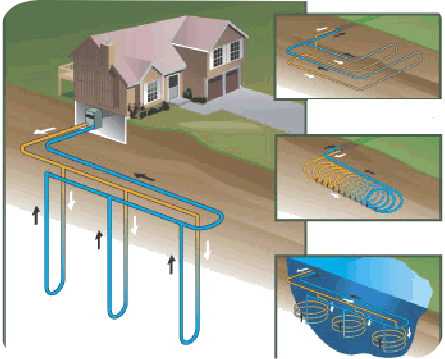
ABOVE: Geothermal system showing several different heat exchange configurations.
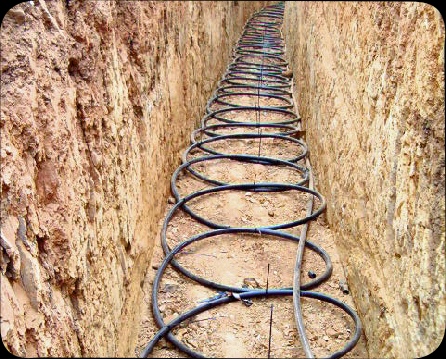
ABOVE: Geothermal system showing a trench heat exchange configuration.
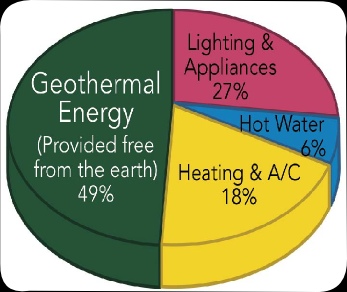
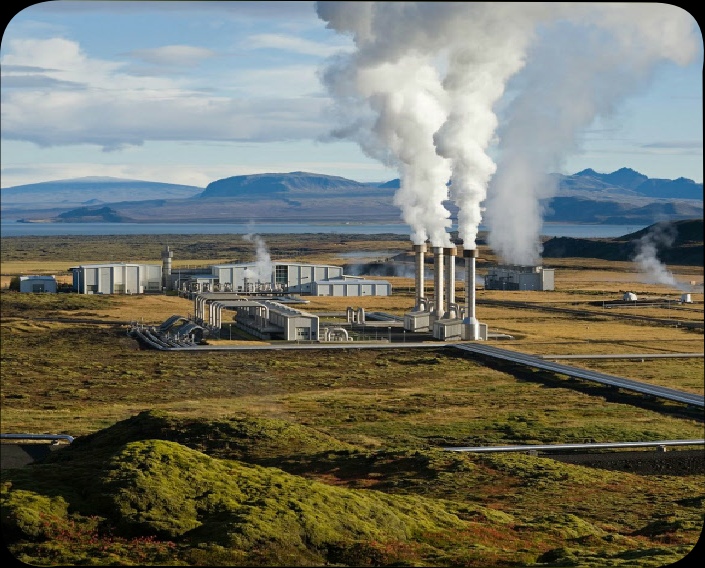
ABOVE: Graph showing a 50% reduction on electrical energy use within a building equipped with a geothermal system.
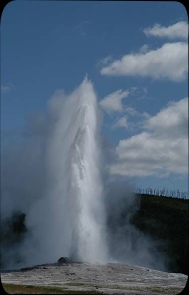
Geothermal heat pumps can be characterized as having one or two loops. The heat pump itself, explained more fully in the article on heat pumps, consists of a loop containing refrigerant. The refrigerant is pumped through a vapor-
In a single loop system, the copper tubing refrigerant loop actually leaves the heat pump appliance cabinet and goes out of the building and under the ground and directly exchanges heat with the ground before returning to the appliance. Hence the name "direct exchange" or DX. Copper loop DX systems are gaining acceptance due to their increased efficiency and lower installation costs but the volume of expensive refrigerant remains high. DX systems are not gaining acceptance in Canada. Numerous botched installations along with the high cost and liability in Ontario are causing people to shun this technology.
In a double loop system, the refrigerant loop exchanges heat with a secondary loop. This may be an open loop or a closed loop system. In a closed loop system, the loop is made of High-

RIGHT: Old Faithful geyser in Yellowstone National Park is a good example of the power trapped under the surface of the earth. The geyser erupts routinely.
LEFT: A geothermal electrical plant uses the heat and pressure trapped underground to produce electricity.
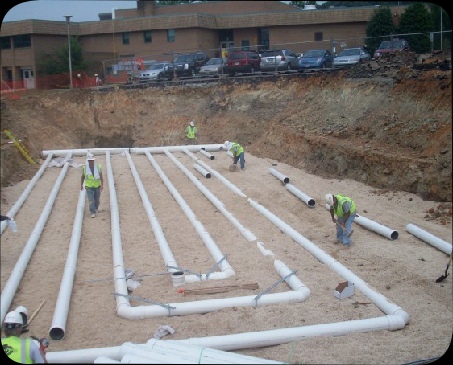
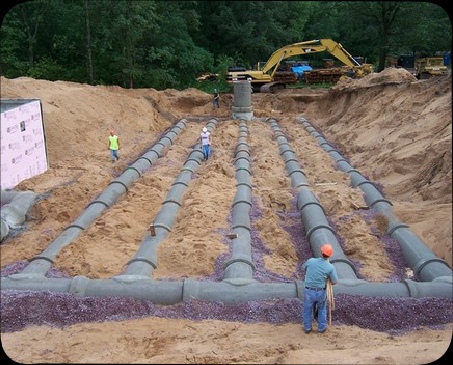
ABOVE: Ground Source Heat Exchanger-
ABOVE: Ground Source Heat Exchanger-
